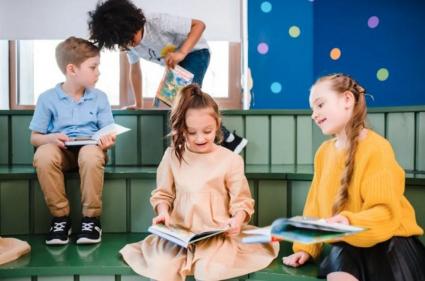
An inclusive classroom maximises the potential of all students in the class no matter what their abilities. Inclusion is not just a classroom that includes students with and without special needs; it is an environment where each student is equally valued and supported. All students have access to the regular curriculum. Some benefits of an inclusive classroom are:
-
Increasing students’ awareness and acceptance of people’s differences
-
Students learning to work together and support each other
-
Better friendship opportunities for all students
-
Helping children with special needs adapt to the real world
The success of an inclusive classroom depends, in large part, on the teacher. The teacher manages the physical environment in the classroom.

To promote inclusion in the classroom, teachers should ensure their classrooms are welcoming and safe for all students. Here are some ideas:
-
Arrange students’ desks in groups, so they learn about and from each other.
-
Give students a say in how the classroom is run. For example, make a set of classroom rules with input from the students at the start of the school term.
-
Avoid sensory overload when decorating the classroom and setting up learning centres. Decorations should foster a calm and welcoming environment.
-
Make sure learning centres or stations are accessible to all students.
-
Use variety in learning centres, to address different learning styles and levels of skill development.
-
Have equipment in the classroom to facilitate different learning styles including a white board, visual aids, audio player/recorder, large pads of paper, paper and pens in different colours, etc.
-
If possible, keep a table in the classroom for students to use for group work.
-
Encourage students to act as peer mentors for each other.

Besides changes to the physical environment, inclusion requires teachers to change or adapt their teaching styles and practices. Here are some things teachers can do:
-
Use both visual and auditory teaching tools to support students’ different learning styles
-
Give homework assignments orally and in writing – or by email or text
-
Encourage the use of technology and assistive devices
-
Use a flexible assessment process
-
When possible, give students choices when assigning homework or projects. For example, if you assign a book report, let students choose whether to present the information in a written report, oral report, slide show or a combination of these methods.
-
Work toward establishing meaningful relationships with your students. Get to know their strengths and weaknesses. Give students descriptive feedback throughout the school year. Encourage students to give you feedback as well.
-
Teachers support struggling students regardless of whether they have special needs. For example, teachers give students a 'preview' of the topics they plan to cover the next day or week. The preview is anything that helps students. For example, if students are struggling with math, the teacher gives them notes with examples they can review at home. If students have trouble taking notes in class, teachers give them outlines of the topic. The students use the outline to fill in points made when the subject is taught. Teachers encourage students to preview the topics on websites like Khan Academy.
Creating an inclusive classroom is an ongoing project that takes a lot of time and effort. However, the benefits to all students make it worthwhile.







